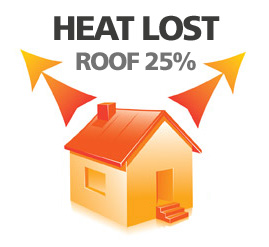How To Reduce Your Utility Bills
 Reduce Your Utility Bills – A DIY Approach
Reduce Your Utility Bills – A DIY Approach
Many air leaks and drafts are easy to find because you can see daylight coming through them or actually fee the draft. Others are not. Holes in insulation, attic floors, basements, and crawlspaces all contribute to huge energy loss.
Here is my top 10 Do-It-Yourself list for improving your homes efficiency and reducing utility bills.
How To Reduce Your Utility Bills
1. Inefficient or leaking windows:
- Single pane glass can account for 10-15% of your heating costs. Simple things like caulking the siding and trim around a window can help with air leaks.
- Removing interior trim and installing minimal expanding foam works great. So does adding a storm window.
- Weather stripping added to the interior of the window costs $20.00 and can reduce or eliminate air leaks.
2. Inspect and repair fireplace dampers:
- Hot air rising through an open fireplace damper can account for 20% heat loss. I’ve seen many dampers that were rusted open, broken or misaligned.
- Installing a fireplace baffle such as one from Battic Door is a great way to keep heat inside the house.
3. Tune up your hot water tank:
- Adding insulation to your hot water pipes and an insulated blanket to your hot water tank will help reduce heat loss and provide a 9% savings
4. Address door leaks:
- One of the simplest things you can do yourself is to install a door sweep and additional weather stripping to a door. The sweep screws to the bottom of the door and us cut to side with a hack saw.
- Weather stripping comes in three pieces and is cut to size with a saw. The type I’m referring to is installed against the door when closed. Replacing existing worn and flattened weather stripping is simple to do as well.
- Finally, make sure the door closes completely by adjusting the door latch. Moving the latch in can make the door close tighter to the existing weather stripping.
5. HVAC duct leaks:
- Sealing duck seams and patching holes with foil tape can make a huge difference in heating and cooling systems efficiency. Insulation ductwork is also a great way to reduce heating or cooling loss.
6. Refrigerator gasket seal:
- If your frig is getting old a new more energy star rated one may not only work better but use half the energy. Test your frig gasket with a piece of printer paper by closing the door on the paper and sliding it out. It should not slide out easily.
- A new gasket can be order from the manufacturer and installed easily. A nut driver that will fit the screws holding the old gasket in place is the only tool you’ll need.
7. Seal penetrations in walls and ceilings:
- Expanding foam and foam backer rods are great for this purpose. Most air leaks in the attic can be located by looking for dirty insulation. Air still travels through fiberglass and will darken it where it is leaking. Also look for pipes and wires penetrating the ceiling. [For more detail on air leak sealing – search “air leaks” in the search box]
8. Attic door or hatch:
- This is a location where you can save up to 20-30% in utility bills. Heat rises and a lot of heat is lost through an under insulated or non-insulated attic door hatch.
- Adding rigid foam insulation with construction adhesive and screws is an easy to do repair as is installing door weather-stripping.
- Companies such as www.attictent.com make specific insulated caps for the pull down stair set ups.
9. Exterior wall light switch and outlets: [Foam Gaskets]
- Because these electrical boxes penetrate into the wall they are often under insulated and often times the insulation contractor does not pay attention and use care tucking insulation behind the boxes.
- Light switch and outlets on exterior walls can also benefit from foam gaskets. These gaskets are inexpensive and are installed under the existing light or outlet plate. All that is needed is a screw driver.
10. Update you furnace, refrigerator and dryer:
- Anything close to 20 years old is 60% inefficient and should be replaced. That old frig in the garage full of beer is costing you a ton in electricity. There are models available today that run on less that $75.00 a year.


















